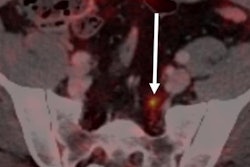
In a study presented on Monday at the European Society for Radiotherapy and Oncology (ESTRO) meeting in Milan, U.K. researchers found that a single session of high-dose-rate brachytherapy safely treated prostate cancer in men, proving especially effective in low-risk cases.
The group tested the efficacy of high-dose-rate brachytherapy in 441 men with prostate cancer who received treatment at one of seven hospitals between 2013 and 2018. The approximate radiation dose was 19 Gy.
After monitoring the patients for 26 months, the researchers found that 94% of them showed no sign of cancer recurrence, as indicated by sufficiently low levels of prostate-specific antigen (PSA). Categorized by prostate cancer risk, the data showed no indication of cancer recurrence in 100% of the patients with low-risk cancer, 95% of those with medium-risk cancer, and 92% of those with high-risk cancer.
At the three-year mark, there was still no sign of cancer recurrence in patients with low-risk disease, though the percentage of cancer-free patients fell to 86% for those with medium-risk cancer and 75% for those with high-risk cancer.
Conventional management of prostate cancer usually involves a series of four to six low-dose radiotherapy treatments. Reducing this extensive approach to a single high-dose treatment could save a considerable amount of time for the patient and the hospital, noted presenter Dr. Hannah Tharmalingam of the Christie National Health Service (NHS) Foundation Trust in Manchester.
"This type of treatment offers an attractive alternative to surgery or other forms of radiotherapy as it has a comparatively low risk of side effects," Tharmalingam said in a release. "It is also a patient-friendly option because the treatment can be given quickly at a single hospital visit."
Though the technology and expertise to deliver high-dose-rate brachytherapy are not yet available at all cancer centers, the technique could be a good option for many men with prostate cancer, Dr. Bradley Pieters, PhD, chair of ESTRO's brachytherapy committee, added in response to the study.
"Given that it may offer time and money savings for hospitals as well as benefits to patients, there is a good argument for investing in this type of radiotherapy," Pieters said.



















